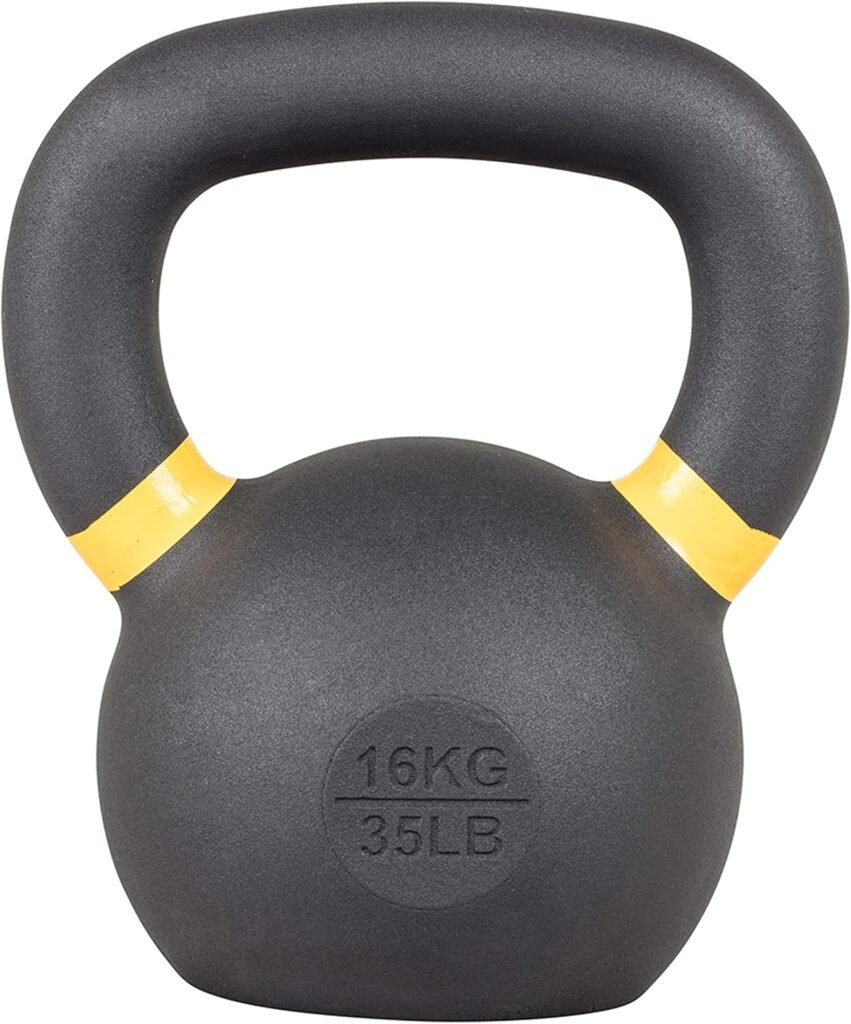Have you ever wondered how to maximize your workout routine while engaging multiple muscle groups and enhancing your cardiovascular fitness at the same time? If so, kettlebell swings may be just what you’re looking for! This exercise has surged in popularity due to its remarkable efficiency and effectiveness. Let’s delve into the myriad benefits of incorporating kettlebell swings into your fitness regimen.

What is a Kettlebell Swing?
A kettlebell swing is a dynamic exercise that primarily targets the hips, glutes, and back, while also involving the shoulders and arms. The movement consists of swinging a kettlebell from between your legs to shoulder height and then back down again in a fluid motion. It not only builds strength but also elevates your heart rate, making it a fantastic addition to any fitness routine.
How to Perform a Kettlebell Swing
Before we discuss the benefits, it’s crucial to understand how to perform a kettlebell swing correctly. Here’s a brief breakdown:
Starting Position: Stand with your feet shoulder-width apart, with a kettlebell placed a foot or so in front of you.
Grip the Kettlebell: Bend at the hips and knees, grasp the handle of the kettlebell with both hands, ensuring your grip is firm.
Hinge Motion: With a slight bend in your knees, hinge at your hips to swing the kettlebell back between your legs, keeping your back flat and chest up.
The Swing: Thrust your hips forward, straightening your body to swing the kettlebell up to shoulder height. Ensure your arms remain straight and relaxed during the swing.
Control the Descent: Allow the kettlebell to swing back down, guiding it between your legs before you repeat the motion.
Key Points to Remember
- Maintain proper form to prevent injuries.
- Keep your core engaged throughout the movement.
- Focus on your hips driving the movement rather than your arms.
Benefits of Kettlebell Swings
Now that you have a grasp of what kettlebell swings entail, let’s explore the numerous benefits they offer.
Full-Body Workout
Kettlebell swings work an impressive number of muscle groups, effectively giving you a full-body workout. By engaging the lower body, core, and upper body, you can expect to develop balanced strength. This means that with just one exercise, you can train multiple muscle areas, making it highly time-efficient.
Enhanced Cardiovascular Fitness
Incorporating kettlebell swings into your routine elevates your heart rate, providing a great cardiovascular workout. This effect is like adding a burst of cardio to your strength training, which can improve your overall heart health, endurance, and calorie-burning capacity.
Improved Core Strength
Since kettlebell swings require core stabilization, they naturally enhance core strength. A strong core not only provides better stability but also supports good posture and reduces the risk of injuries during other physical activities.
Increased Power and Explosiveness
Kettlebell swings focus on the hip hinge movement, which enhances your explosive power. This translates well into many other physical activities, including sports and daily tasks requiring strength and agility. Improved power can lead to better performance whether you’re playing basketball, running, or doing household chores.
Efficient Fat Burning
If fat loss is one of your goals, kettlebell swings are your ally. The combination of strength and cardiovascular benefits can foster an elevated metabolic rate post-exercise. This means your body continues to burn calories even after you’ve finished working out, giving you more bang for your buck.
Better Posture and Flexibility
Kettlebell swings promote increased flexibility, especially in the hips and lower back region. As you practice the movement, you’ll likely notice improvements in your posture due to the emphasis on maintaining an upright torso. Better posture not only boosts physical appearance but also contributes to overall health and well-being.
Time Efficiency
In our busy lives, finding time for long workout sessions can be difficult. Kettlebell swings allow you to maximize your workout effectiveness in a short amount of time. You can integrate them into a full body workout, HIIT session, or a quick routine to fit your schedule.
Versatility of Kettlebell Swings
The beauty of kettlebell swings lies in their versatility. You can easily adjust the number of repetitions, sets, and weights according to your fitness level. Additionally, kettlebells don’t require a lot of space, making them perfect for home workouts or traveling.
Bone Density and Strength
Regularly practicing kettlebell swings can lead to stronger bones. Weight-bearing exercises encourage bone density improvements, which can help fend off osteoporosis and fractures, especially as you age.
Stress Relief and Mental Benefits
Exercise is known to promote the release of endorphins, or the ‘feel-good’ hormones. Kettlebell swings, with their intensity and focus, can serve as an effective stress reliever. Not only do they engage your body, but they also offer a mental break and a chance to clear your mind.
Low Risk of Injury
When performed with proper form, kettlebell swings have a low risk of injury, especially when compared to high-impact exercises. You should always prioritize safety and technique, but this exercise can be gentler on the joints, making it suitable for a wider audience.
You are currently viewing a placeholder content from YouTube. To access the actual content, click the button below. Please note that doing so will share data with third-party providers.
More InformationIncorporating Kettlebell Swings into Your Routine
Transitioning to including kettlebell swings into your regular exercise routine doesn’t have to be daunting. Here are some tips to help you get started:
Set a Goal
Determine why you want to include kettlebell swings in your workouts. Having a clear goal can motivate you, whether it’s improving strength, enhancing your cardio, or shedding a few pounds.
Start Slow
If you’re new to kettlebell swings, give yourself time to adjust. Begin with lighter weights and focus on perfecting your form before increasing the weight or intensity.
Combine with Other Exercises
To reap the most benefits, incorporate kettlebell swings alongside other exercises. Pair them with squats, lunges, or push-ups for a well-rounded workout routine.
Create a Regular Schedule
Consistency is key to any fitness routine. Set aside specific times each week to practice your kettlebell swings, making them a regular fixture in your exercise regimen.
Listen to Your Body
Pay attention to your body’s signals. If you feel discomfort or pain, adjust your technique or consider resting for a bit. Remember, you should challenge yourself, but always prioritize safety.
Sample Kettlebell Swing Workout
Here’s a simple kettlebell swing workout you can try at home or in the gym. This routine targets different muscle groups while maintaining an elevated heart rate.
| Exercise | Sets | Reps |
|---|---|---|
| Kettlebell Swings | 3 | 15-20 |
| Goblet Squats | 3 | 10-15 |
| Kettlebell Deadlifts | 3 | 12-15 |
| Russian Twists | 3 | 12-15 each side |
| Plank | 3 | 30 seconds |
Cool Down and Stretching
After your workout, spend a few minutes cooling down and stretching. Focus on your hips, lower back, shoulders, and any other areas that may feel tight after your session. This practice improves recovery and helps maintain flexibility.
Safety Considerations When Performing Kettlebell Swings
As with any exercise, it’s essential to be mindful of safety. Kettlebell swings can be extremely effective, but improper form can lead to injury. Here are some safety tips to remember:
Warm Up Properly
Always begin with a warm-up to prepare your muscles and joints for the workout. Dynamic stretches or light cardio can help increase blood flow and reduce the risk of injury.
Focus on Form
Never compromise your form for the sake of heavier weights or higher reps. Maintaining proper posture and using the correct technique is more important than performing the exercise quickly or with heavier kettlebells.
Don’t Overdo It
If you’re new to kettlebell swings, avoid excessive repetitions right away. Start with a manageable number of swings, gradually increasing as your strength and endurance improve.
Modify as Needed
If traditional kettlebell swings feel uncomfortable, consider modifying the movement. Swing with one arm, use a lighter kettlebell, or practice the hip hinge movement without the kettlebell until you feel more confident.
Stay Hydrated
Don’t forget to hydrate during and after your workout. Keeping your body well-hydrated supports optimal performance and recovery.
Conclusion
Kettlebell swings are an efficient, effective, and versatile exercise that offers numerous benefits, from enhanced strength and cardiovascular fitness to improved flexibility and posture. Whether you’re a seasoned athlete or a fitness beginner, incorporating kettlebell swings into your routine can help you reach your fitness goals while enjoying a fun workout.
Take the plunge into kettlebell swings, and discover how this single exercise could transform your fitness journey, helping you feel stronger, healthier, and more confident! Remember, with consistency, patience, and attention to form, you can harness the full potential of kettlebell swings in no time. Get ready to see positive changes in your fitness level and overall well-being!







